Restart a Heart Day 2019 – Learn how to save a life
The 16th October 2019 is World Restart a Heart Day; a global initiative which aims to improve the low numbers of people surviving out-of-hospital cardiac arrests.
Organisations all over the world are coming together to increase public awareness of cardiac arrests and the number of people trained in life saving CPR. This will hopefully increase the low numbers of people surviving out-of-hospital cardiac arrests.
Survival rates for sudden cardiac arrest are less than 1 in 10
The British Heart Foundation report that, across the U.K. there are over 30,000 cardiac arrests outside of hospital every year, but the survival rates are less than 1 in 10.
With only 3% of cardiac arrests happening within the recommended retrieval distance of a defibrillator, it is also important to increase the amount of public access defibrillators (PAD) available.
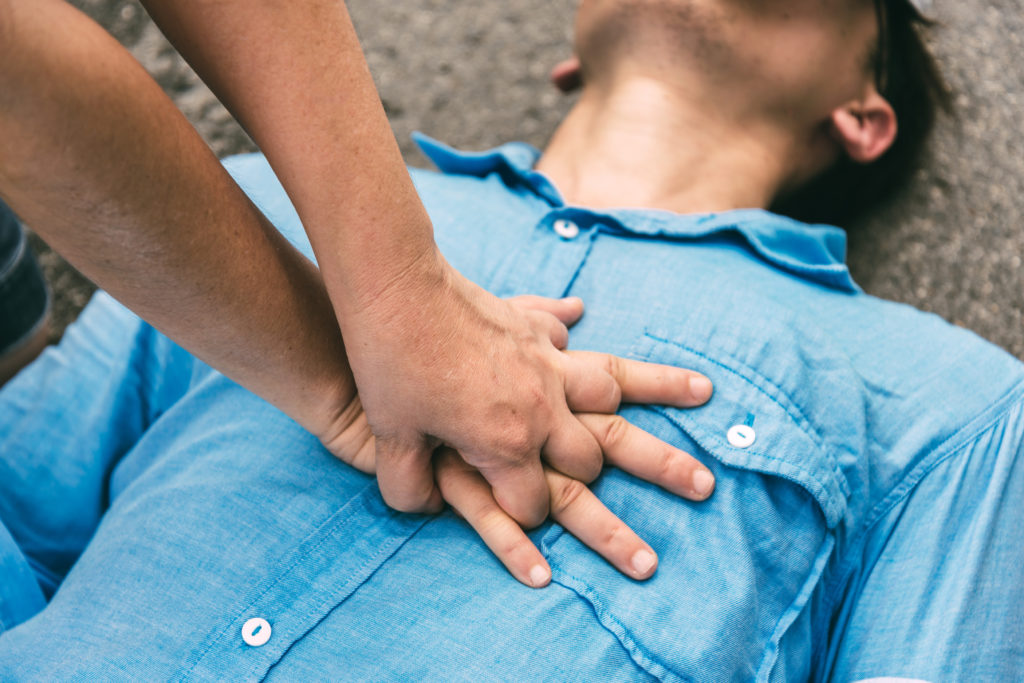
The first few minutes following a cardiac arrest are crucial; without early intervention of CPR or a defibrillator only around 2.5% of sudden cardiac arrest victims survive. Every minute that goes by without treatment decreases their survival chances by 10%.
Effective CPR and use of a defibrillator can increase survival rates to 90%
If a defibrillator is used and effective CPR is administered within 3-5 minutes of cardiac arrest, the chances of survival could increase to around 70%, if it occurs within 1 minute, the casualty could have up to a 90% better chance of survival.
The average response time for an ambulance in an urban area is around 11 minutes, which means early intervention from a bystander, for those suffering sudden cardiac arrest outside of hospital is crucial.
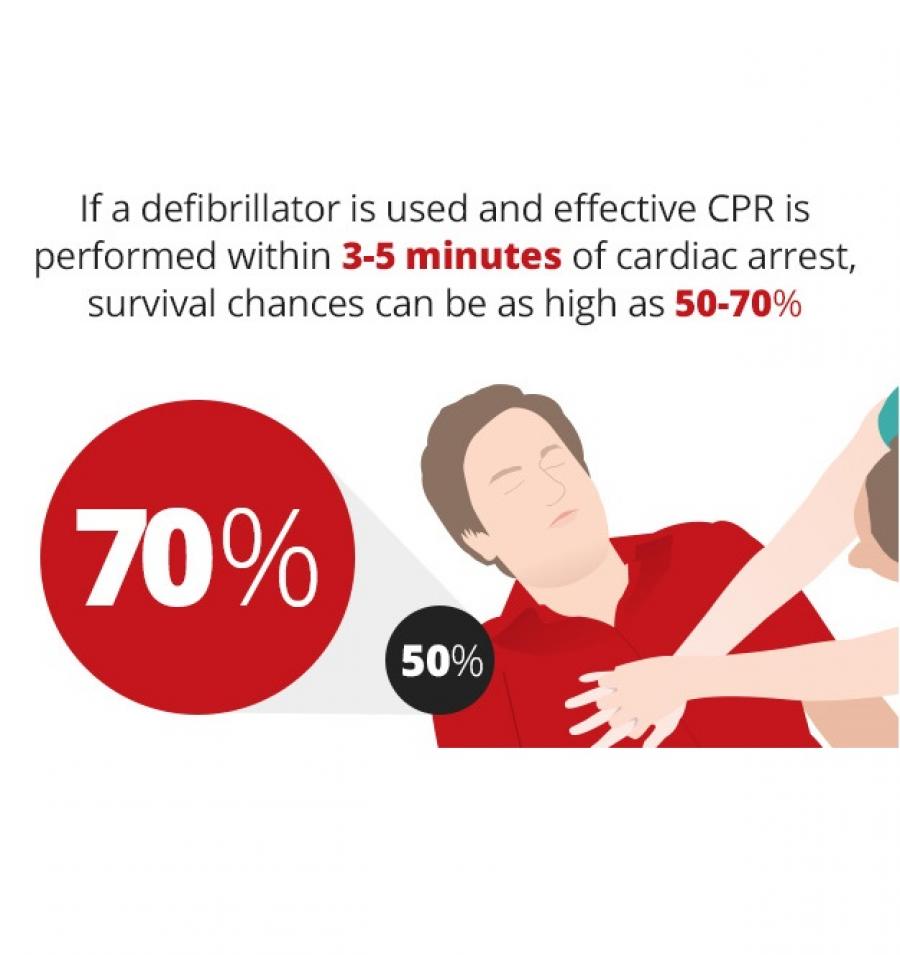
Every minute counts when someone is suffering a sudden cardiac arrest. If you witness a cardiac arrest you can help save a life by: calling 999, performing CPR and using a PAD if one is available.
Cardiopulmonary Resuscitation (CPR)
CPR is a simple life-saving technique given to someone in cardiac arrest. A cardiac arrest is caused by an electrical problem in the heart which stops blood pumping around the body and to the brain. CPR aims to take over the job of the heart and lungs by keeping blood and oxygen flowing throughout the body. It incorporates chest compressions and rescue breaths, and without it a person having a cardiac arrest will die within minutes.
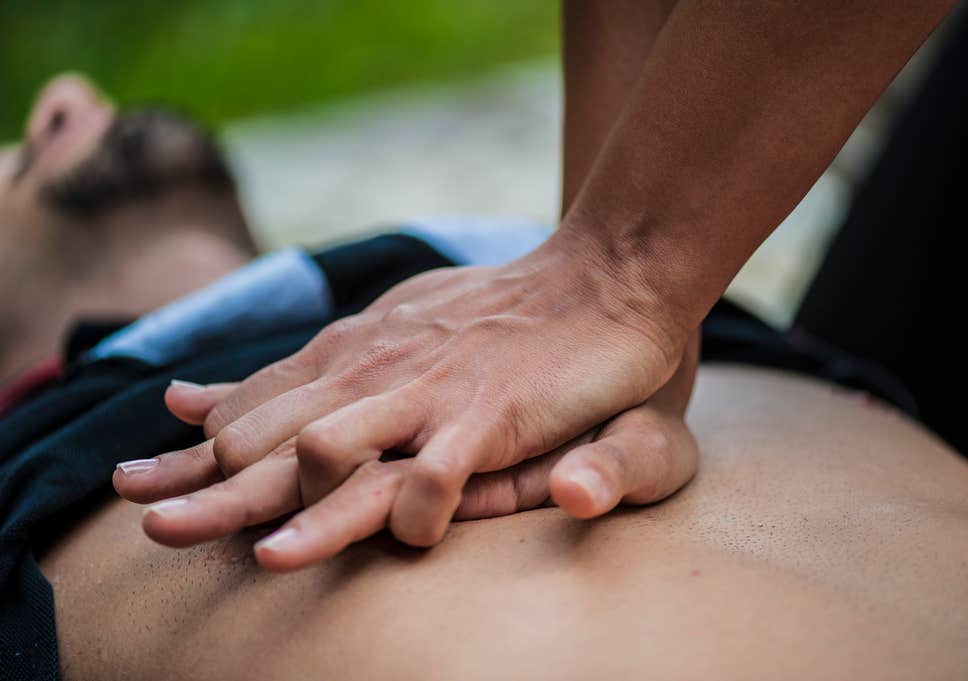
How to perform CPR on an adult:
- Check to see if the person is breathing normally. Tilt their head back and look at their chest or stomach to see if it is moving. Look, listen and feel for breaths.
- Call 999 immediately. If no-one else is around to do it or help you, call and put your phone on loudspeaker so your hands are free to perform CPR.
- Give chest compressions. Start this step as soon as possible. Place the heel of one of your hands in the centre of the persons chest, place the other on top and interlock your fingers. Use the heel of the hand to push down firmly, using straight arms and your bodyweight, to press the chest down around 5-6cm and release. This should be done at a rate of 100-120 chest compressions a minute.
- Give two rescue breaths. Tilt the head back and lift the chin to open the airway. Pinch the persons nose closed and breathe steadily into the persons mouth. Do this twice.
- Repeat. Continue these steps until the ambulance arrives or a public access defibrillator is retrieved.
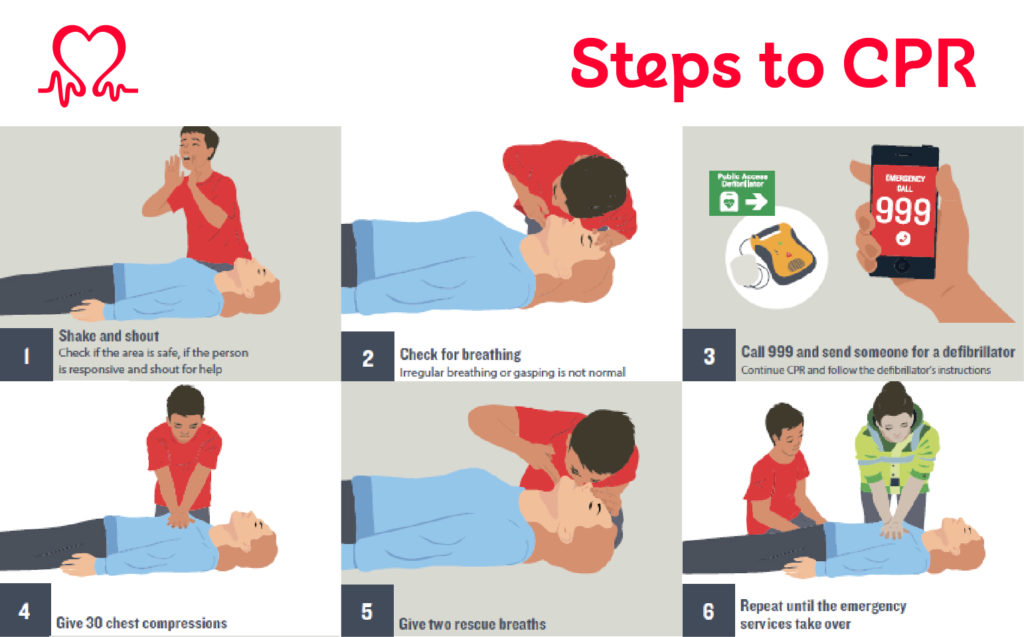
Defibrillator
If a PAD is available, this should be used immediately. Do not worry, they are easy to use with clear instructions. The defibrillator will only deliver a shock if needed. When using a defibrillator, follow the below steps:
- Check to see if the person is breathing normally. Tilt their head back and look at their chest or stomach to see if it is moving. Look, listen and feel for breaths.
- Call 999 immediately. If no-one else is around to do it or help you call and put your phone on loudspeaker so your hands are free to perform CPR.
- Switch on the defibrillator. This may be by pressing a button or simply opening the lid.
- Adhere to the voice commands. They will tell you exactly what to do and when.
- Expose the patient’s bare chest and stomach. Remove all clothing, rip or cut if necessary.
- Apply pads to patient’s bare chest. Follow the pictures on the pads. One pad should be positioned on the upper right side of the rib cage, the other is positioned on the lower left side of the rib cage.
- Do not touch the patient whilst it analyses heart rhythm. The defibrillator will analyse electrical activity in the patient’s heart. If it detects an abnormal shockable rhythm it will charge itself up.
- Stand clear whilst shock is delivered. Shock will be delivered after a 3 second countdown, or by pressing the flashing button.
- Start CPR as above. Continue until the defibrillator says to stop.
Get involved
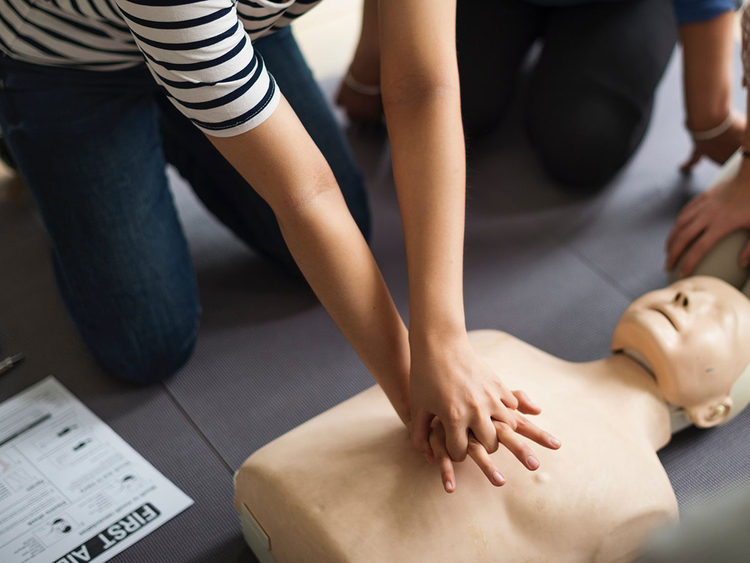
These steps are the difference between life and death. This is why World Restart a Heart Day is so important as it raises awareness of these lifesaving practices. Get involved by organising all important training for your staff, which can teach them how to save the life of a co-worker or loved one someday. The more people who know how to administer CPR the higher the chances of survival can be when someone suffers a sudden cardiac arrest in the workplace. Increase the chances of survival even more by buying a defibrillator for your workplace.
Kays Medical provide a range of defibrillators as well as resuscitation training devices and First Aid Training Courses to help you train staff to provide possible life saving treatment. Contact us today to help prevent fatal cardiac arrests in future.